Polish Food: A Quick Intro to 21 Specialities
Foodies need not approach Poland with fear, even after sampling the culinary delights of France, Spain and Italy and the beers of Belgium, the Czech Republic and Germany. Polish cuisine has a history just as long as its counterparts elsewhere. It shows its Slavic and thanks to the innovation of cooks and homemakers around the country, it survived the difficult days of the People’s Republic. (Here’s an article that offers an insight into what Polish food was like in Communist Poland)
There is a more exhaustive list on this TripAdvisor thread, so instead, I’ve put together a list of the delicacies that I have tried and enjoyed (sometimes unexpectedly), the places I found them and their (hopefully correct) pronunciations. For the less adventurous, there are also plenty of Italian and fast food restaurants, but I can’t see why anyone else would choose them when the local food is tastier and often cheaper too!
It’s been a painful list is to compile, especially when Polish food isn’t readily available in Singapore, but I hope that it’s useful to any newcomers who might read this. All recommendations and corrections are welcome!
The Staples
Even the most basic milk bars (state-subsidised cafeterias) serve some of these specialities.
Pierogi
(PEE-eh-rrro-ghee)
These semi-circular dumplings are probably the most recognisable Polish dish, one which appears often in places with Polish immigrants like the United States and Australia. The homemade ones are the best, but if an invitation is missing, Zapiecek is a fail-safe pierogarnia with several outlets in Warsaw.
Pierogi can be stuffed with almost anything, but they’re most commonly filled with potatoes and quark (pierogi ruskie, which are as Russian as Singapore noodles are Singaporean), meat, cabbage, mushrooms and spinach. Don’t be surprised to see black pudding or blueberries on the menu! They are usually boiled and often then pan-fried in butter or lard, then topped with sautéed onions, breadcrumbs or bacon bits. How good does that sound?
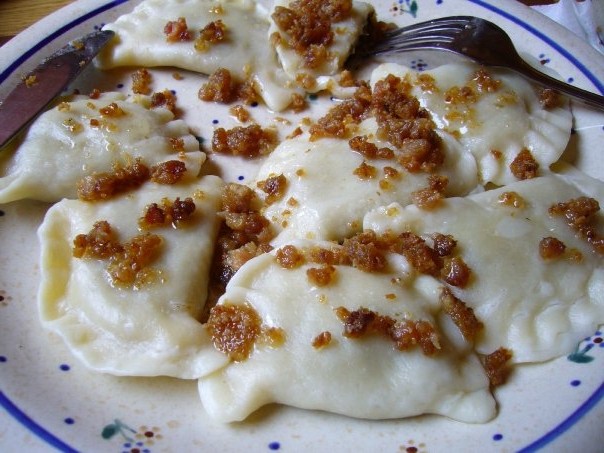
Naleśniki
(NAH-lesh-nee-kee)
The crepe-like pancakes are commonly stuffed and folded with similar fillings to those found in pierogi, so they may be savoury or sweet. Every place I’ve been to also cooks theirs to a different degree of crispiness, as you can see from the photos.
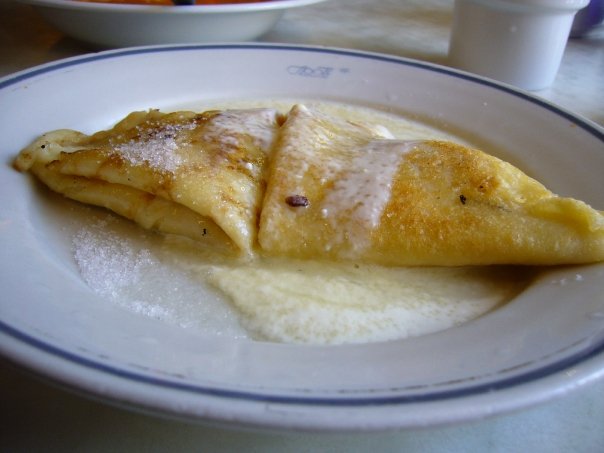
Bigos
(BEE-ghos)
Here’s a dish that paleos might approve. It’s a hunter’s stew that mainly consists of meat (which includes pork, beef, sausages and even game), cabbage (often fermented), mushrooms and other vegetables. Bigos is very hearty, and some versions may be sourer than others depending on the amount of sauerkraut that has been added.
Kotlet Schabowy
It looks safe and familiar because it’s basically a pork schnitzel or escalope. The fillet is coated with breadcrumbs, flour and eggs before it is fried, and usually, it is served with gravy and chips, new potatoes or other sides, as you can see in the photo.
Kluski
(KLOOS-kee)
An all-encompassing word for several types of potato dumplings. Kopytka (KOH-pit-kah, little hooves) are the type that most resemble gnocchi. They are boiled and may be served as an accompaniment to meat, doused in gravy or baked with toppings.
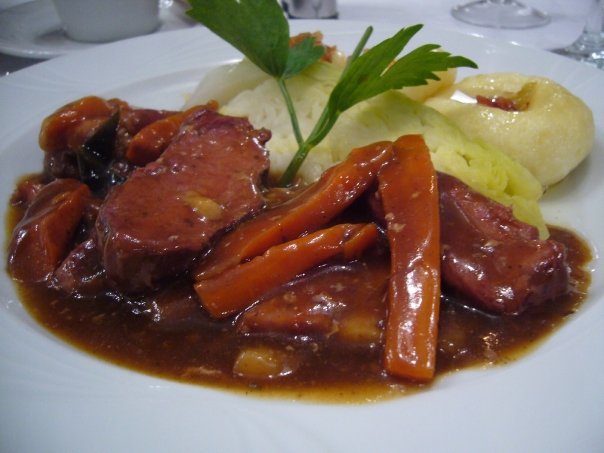
Żurek
(ZHOO-rreck)
A pale sour rye soup with meat or sausages, and it often includes a boiled egg and potatoes. Flavour-wise, it’s like a beet-less borscht.
Gołąbki
(GOH-waumb-kee)
Meat and rice wrapped with cabbage leaves, then baked and served with tomato sauce. All the food groups in a dish that tastes even better on a cold day.
Zapiekanka
(ZAH-pee-eh-KAHN-kah)
This is simply an open-faced baguette sandwich toasted with tomato sauce, mushrooms and cheese at its most basic. I know it sounds too simple to be unique to the country, but hear us out. It’s found in plenty of places across the country around the clock, which makes it a lifesaver after a night of heavy drinking. It’s so easy to cobble together and heat up even while nursing the worst hangovers.
Regional & Seasonal Specialities
Oscypek
(O-shih-pek)
From Podhale region comes several varieties of smoked cheese which have pressed into decorative shapes, and all of them have Protected Designation of Origin status. Oscypek refers specifically to the variety that is made from raw ewe’s milk. In the ski resort town of Zakopane, one will probably smell it before they see it, but I’ve purchased it in the Jarmark in Gdansk too.
It’s sometimes warmed on a grill and served with jam. The taste varies with the type of cheese but it’s some combination of smoke and salt (obviously), and like haloumi, it’s a bit squeaky!
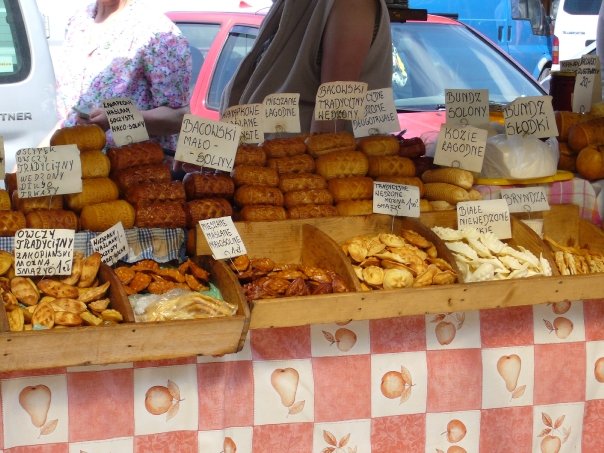
Obwarzanki
(OB-vahrr-zahn-kee)
These bagels are sold from street stands everywhere in the centre of Kraków. They make cheap and filling snacks for long road trips to Wieliczka and other destinations around the mediaeval city. The gourmet scene hasn’t looked down on it either – the Miod Malina restaurant serves it in a tasty dish with wild boar.
Pierniki
See the section on desserts below.
Wild Mushrooms
Believe me, it’s safe to eat forest mushrooms if one knows what to look for. I’ve seen them sold in markets and from the shoulders of highways in the summer, and they make very tasty additions to soups and pasta. I never enjoyed truffle oil again after that trip.
To survive a mushroom picking, read Anna’s blog post and go with someone more experienced.
The Bizarre
I’d still eat them – and I have! There are a few more that I need to hunt down too.
Kaszanka
(KAH-shan-ka)
Black pudding, or pig’s blood and offal that has been mixed with grain into a stuffing. So savoury, with a satisfying chew and that feeling which is similar to eating a blood cube in Taiwan.
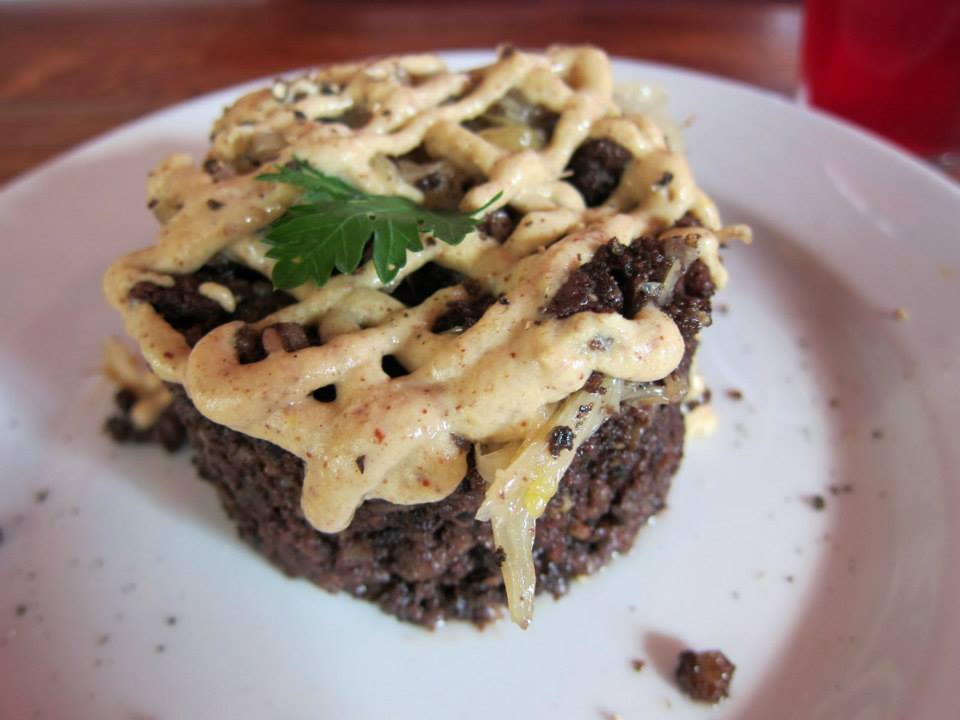
Czernina
(CHER-nee-na)
More blood! This time, duck or goose blood is made into a soup with noodles, offal and fruit. The result is hearty and yet a little sweet. In the old days, czernina was served to a spurned suitor by the parents of his love interest, but the dish is no longer just for the broken-hearted. Duck-based dishes like this are a speciality at Sami Swoi and Hacjenda, and both are in Poznan.
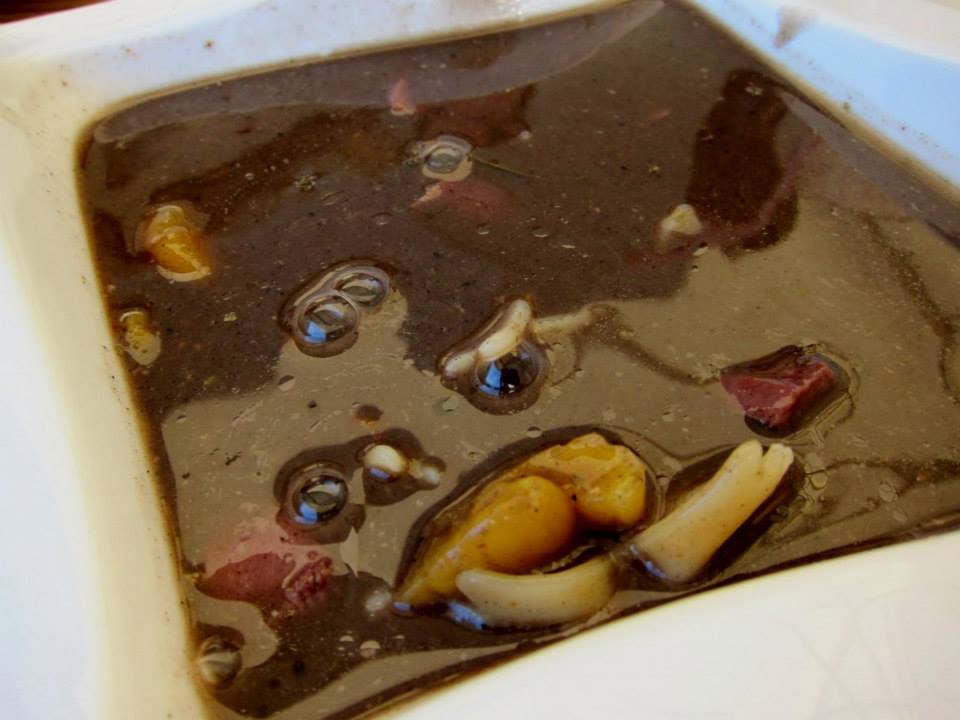
Smalec
(SMAH-lets)
Lard is spread on bread in the same way one might use peanut butter. I repeat, pure, glorious lard. It’s rich, of course, but not in same way butter is, and there are bits of rind in the mix. It’s served as a bar snack in some places, such as the Spiz microbrewery in Wroclaw‘s rynek.
Elsewhere: Eating pufferfish in South Korea
Sweets
Pierniki
(PEE’UR-nee-kee)
This gingerbread is a speciality of Torun, the birthplace of the astronomer Copernicus. You can get hands-on and make your own biscuit at one of the two museums, although it will be baked to the consistency of stone (it’s only meant to be a souvenir). Edible ones from the shops around the town are soft and chewy and they may be coated with chocolate or filled with jam. I liked the Kopernika ones the best.
Ptasie Mleczko
(P’TAH-shee-eh MLECH-ko)
The name translates to “bird’s milk”, but it’s not the same thing as the cake in Russia. What we have here is milk that has been whipped with agar into a fluffy soufflé which is then coated in chocolate. The confectionery by E. Wedel and several other brands can be bought at their boutiques around the country or from the supermarket. I haven’t yet encountered a place that makes them fresh – let me know if you do!
They make great gifts for Polish hosts, and among the items listed here, they are the most likely to survive the journey home intact.
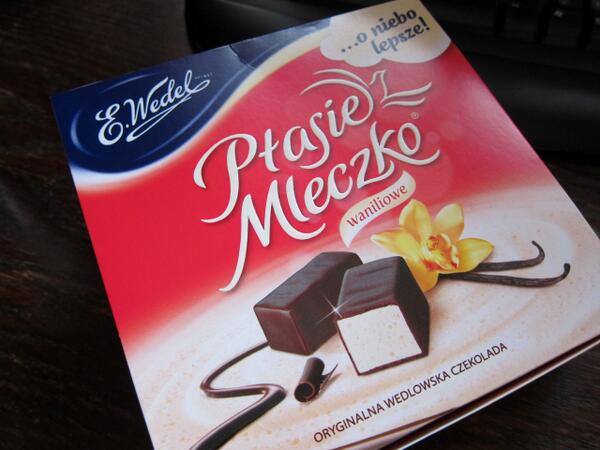
Bakaliowe
(BAH-ka-lee-oh-veh)
Ice-cream can be had anywhere – just not in this flavour. If a trail mix ice-cream is missing from your life, this – the result of folding dried fruit and nuts into sweet cream – might be the answer. Most of the parlours will have their own version, but always, always go to a Grycan outlet – it’s usually the tub depletes the quickest.
Alcohol
Beer and mead
The most common local beers (piwo) include Tyskie, Lech, Perła and Zywiec. Beer cocktails are popular among the young ones, and ginger, blackberry and other fruit flavoured cordials are usually available. The sight of people drinking beer through a straw takes getting used to though. It reminds me of the days of drinking Diesel as a student – it gets to the head quickly!
Poland also makes some of the most prized varieties of mead (miód pitny), perhaps the oldest drink in history. fermented honey water. Polish meads tend to be sweet or very sweet, made with anything from 3 parts water to one part of honey (trójniak) to 2 parts of honey to one part of water (półtorak), and aged for six years or more.
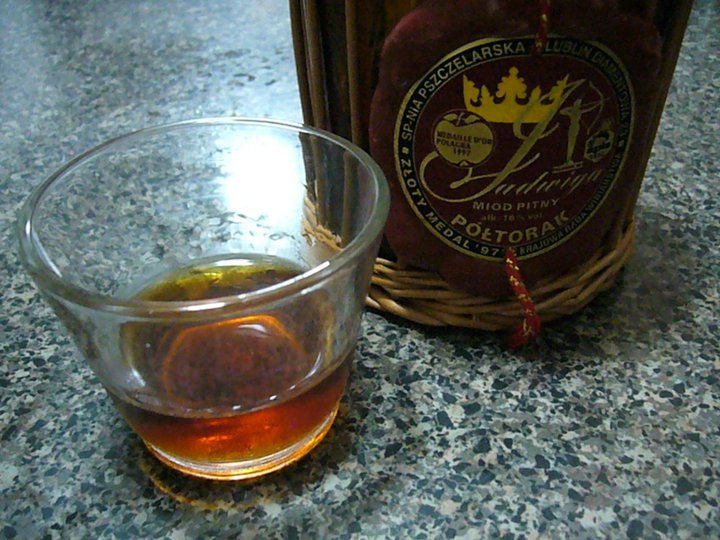
Spirits
Little bottles of 190-proof rectified spirit (spirytus rektyfikowany) can be found in the supermarket, but they’re not meant to be drunk! They’re used to make tinctures from fruits and herbs. It’s entertaining to snap a picture to get a reaction from the people back home though.
This list wouldn’t be complete without a mention of vodka (wódka with a double-O sound). It comes in several flavoured and unflavoured varieties – of the former, Żubrówka is unique in that it’s steeped with a blade of bison grass in the bottle. Mix a shot with apple juice to make a tatanka cocktail. Another sweet herbal vodka that I enjoyed was Żołądkowa gorzka, served neat and freezing after a meal.
If you’ve tried Polish food before, which was your favourite?
19/12/2014 @ 5:18 AM
Pierogie and Ptasie Mleczko omomomomomo!!! I’m back home in 6 days, can’t wait to dig into all of these dishes!!
21/12/2014 @ 1:36 PM
Nooo way! Happy Christmas Aga – enjoy the food on my behalf. :D
10/01/2015 @ 6:33 AM
I love pierogi so much!! I would go back to Poland just to gorge myself on vegetarian pierogis for sure. Loved all of the cheeses out there too and the kind of heavy style rye breads that you get to smother in waay too much cream cheese omnom :)
17/01/2015 @ 8:31 PM
Oh yes, the bread, how could I forget that? It’s really good anywhere in mainland Europe.
11/02/2016 @ 12:29 PM
Oh my God, this post made me miss Polish food! Me and Patryk were both born and raised in Poland and we LOVE everything that you mention here.
Our favourites are zurek, pierogi and cutlet stably <3 <3
13/02/2016 @ 10:06 AM
I miss it every now and then too, but being able to attend the embassy’s events helps me manage the cravings!